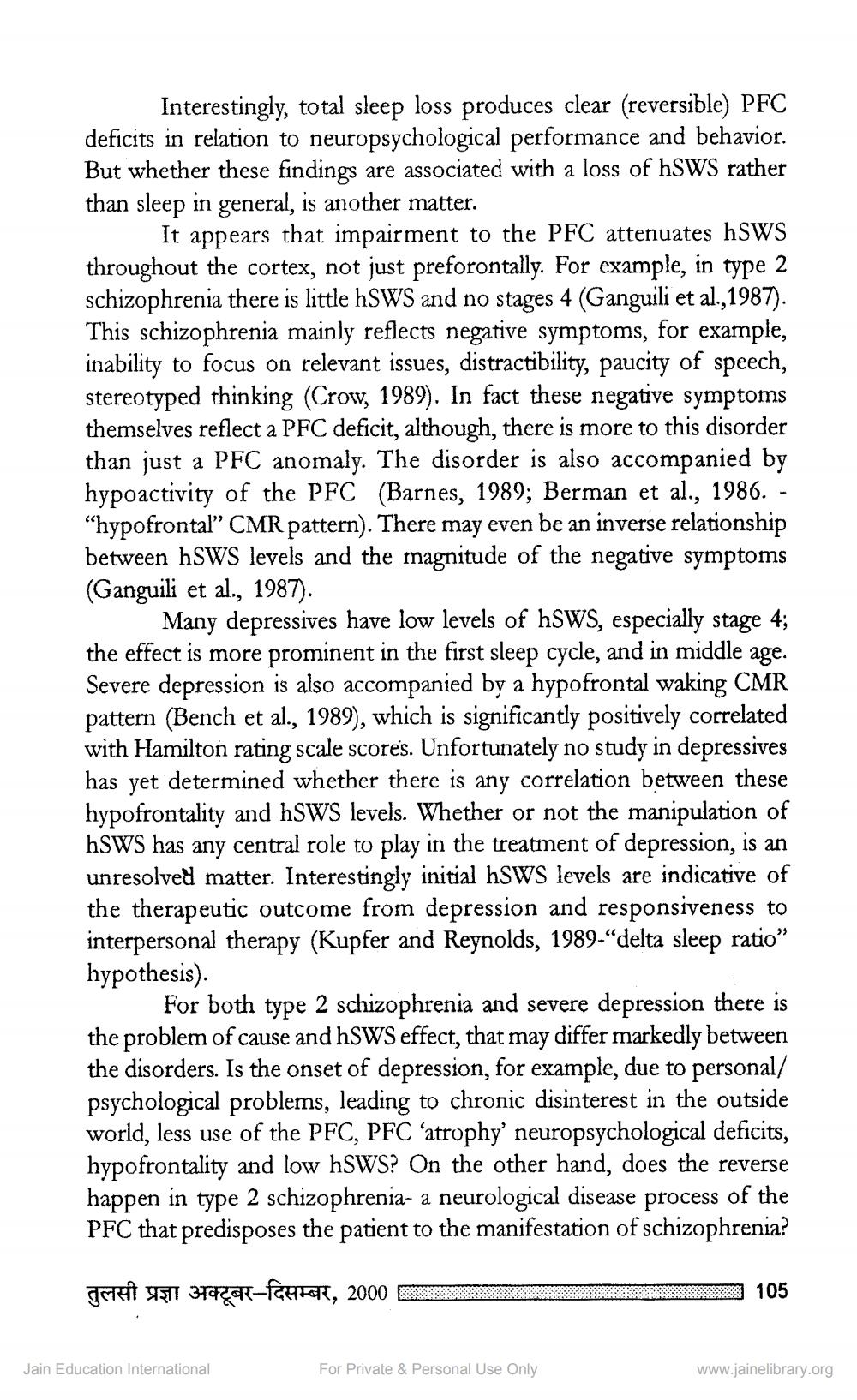________________
Interestingly, total sleep loss produces clear (reversible) PFC deficits in relation to neuropsychological performance and behavior. But whether these findings are associated with a loss of hSWS rather than sleep in general, is another matter.
It appears that impairment to the PFC attenuates hSWS throughout the cortex, not just preforontally. For example, in type 2 schizophrenia there is little hSWS and no stages 4 (Ganguili et al.,1987). This schizophrenia mainly reflects negative symptoms, for example, inability to focus on relevant issues, distractibility, paucity of speech, stereotyped thinking (Crow, 1989). In fact these negative symptoms themselves reflect a PFC deficit, although, there is more to this disorder than just a PFC anomaly. The disorder is also accompanied by hypoactivity of the PFC (Barnes, 1989; Berman et al., 1986. - “hypofrontal” CMR pattern). There may even be an inverse relationship between hSWS levels and the magnitude of the negative symptoms (Ganguili et al., 1987).
Many depressives have low levels of hSWS, especially stage 4; the effect is more prominent in the first sleep cycle, and in middle age. Severe depression is also accompanied by a hypofrontal waking CMR pattern (Bench et al., 1989), which is significantly positively correlated with Hamilton rating scale scores. Unfortunately no study in depressives has yet determined whether there is any correlation between these hypofrontality and hSWS levels. Whether or not the manipulation of hSWS has any central role to play in the treatment of depression, is an unresolved matter. Interestingly initial hsWS levels are indicative of the therapeutic outcome from depression and responsiveness to interpersonal therapy (Kupfer and Reynolds, 1989-"delta sleep ratio" hypothesis).
For both type 2 schizophrenia and severe depression there is the problem of cause and hSWS effect, that may differ markedly between the disorders. Is the onset of depression, for example, due to personal/ psychological problems, leading to chronic disinterest in the outside world, less use of the PFC, PFC ‘atrophy' neuropsychological deficits, hypofrontality and low hSWS? On the other hand, does the reverse happen in type 2 schizophrenia- a neurological disease process of the PFC that predisposes the patient to the manifestation of schizophrenia?
geret Fil 37açar-fahrez, 2000
105
Jain Education International
For Private & Personal Use Only
www.jainelibrary.org




